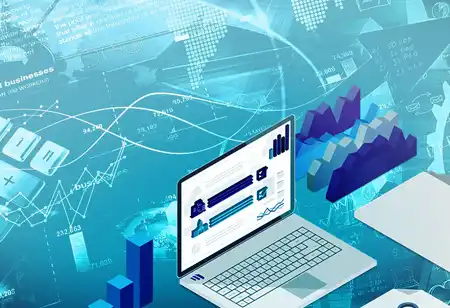THANK YOU FOR SUBSCRIBING
Be first to read the latest tech news, Industry Leader's Insights, and CIO interviews of medium and large enterprises exclusively from CFO Tech Outlook
THANK YOU FOR SUBSCRIBING

By
CFO Tech Outlook | Tuesday, October 10, 2023
Stay ahead of the industry with exclusive feature stories on the top companies, expert insights and the latest news delivered straight to your inbox. Subscribe today.
RPA was initially primarily employed as a back-office automation tool, but banks have now successfully used it to organize the middle-office and the front tasks.
Fremont, CA: RPA, or robotic process automation, is the application of automation technology that enables the user to configure a software robot to capture and replicate human actions involved in already-existing processes, such as transactions, editing data, recording or updating databases, triggering responses, and interacting with other digital systems.
The robotics revolution in manufacturing, which has completely changed the manufacturing industry, may be used to relate to the RPA revolution in banking. RPA was initially primarily employed as a back-office automation tool, but banks have now successfully used it to organize the middle-office and the front tasks. With higher transaction processing productivity, RPA offers exceptional accuracy and processing speed gains.
One of those keywords is robotic process automation (RPA), frequently helpful in boardroom conversations in financial services companies worldwide. This technology is the most reasonable response to a bank's automation issues. RPA as a bank solution is already continuously evolving to fulfill a bank's automation demands through increased features, supplementary technologies, and strategic alliances, which is one of the leading causes.
Three developments using robotic process automation (RPA) within the financial industry are as follows:
• Smarter RPA bots
Many important RPA solution vendors introduced AI capabilities in their RPA services. These AI tools aim to improve the RPA bot's capacity to digitize, extract, and analyze unstructured data from scanned or electronic documents.
Computer vision, natural language processing, plus machine learning gets used to extract information from subpar documents, recognize handwriting, and recognize photos. The conversational AI interface, which enables user interaction with the RPA bots, is the other AI-based component in RPA systems. RPA remedies: Becoming smarter increases the number of automated organizational activities and makes unstructured data a perfect starting point for organizations wishing to implement AI applications throughout their workplace.
• Robotic Service Orchestration
Another essential enabler for an effective RPA deployment is this. To increase the effectiveness of the bots within an organization, robotic service orchestration experts like Enate have recently seen vendors engage in RPA and form alliances.
A sophisticated centralized orchestration platform is necessary to effectively scale RPA bots, especially attended bots, as RPA permeates organizations. This platform should coordinate with the numerous organizational systems and the workers involved to handle the many duties related to carrying out a process.
I agree We use cookies on this website to enhance your user experience. By clicking any link on this page you are giving your consent for us to set cookies. More info

However, if you would like to share the information in this article, you may use the link below:
www.cfotechoutlookeurope.com/news/key-robotic-process-automation-trends-to-know-nid-2041.html



